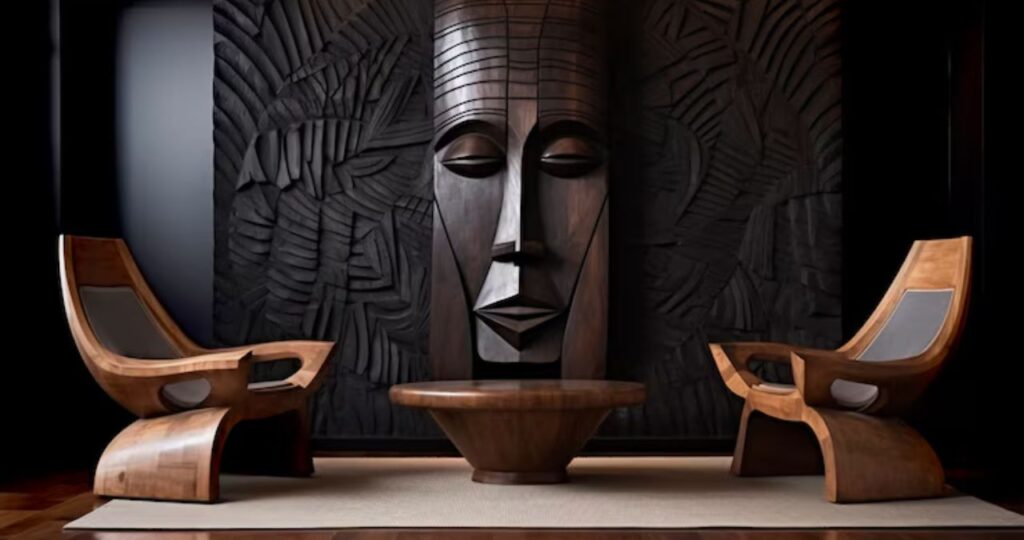Italy has long been synonymous with fine art, timeless architecture, and a passion for detail that elevates even the simplest designs into objects of beauty. Among its most treasured exports is the tradition of luxury craftsmanship—furniture, fixtures, and interiors that echo centuries of artisanal mastery. But within this well-established world of Italian luxury, a new name has emerged, not to repeat tradition, but to reinvent it: Fapelli.
Fapelli is not merely a furniture brand or a design house. It is a movement—a confluence of heritage, innovation, and sustainable sophistication that is setting a new standard for luxury interiors. From its sculptural furniture lines to its meticulous approach to sourcing materials, Fapelli is rewriting the rules of what it means to create a luxurious space.
In this comprehensive exploration, we dive into how Fapelli is redefining Italian craftsmanship in the realm of luxury interiors, dissecting its design philosophy, production methods, material sourcing, global impact, and future-forward outlook.
1. The Origins of Fapelli: Where Tradition Meets Vision
The roots of Fapelli trace back to Florence, a city that has been the heart of Renaissance art and high craftsmanship for centuries. Born out of a desire to bring modern relevance to traditional techniques, Fapelli was founded by a collective of designers, architects, and artisans who shared one core belief: true luxury lies in thoughtful creation.
Unlike brands driven purely by aesthetics or market trends, Fapelli began with a question: What does luxury look like when it serves the future as much as the past? This inquiry gave rise to a design ethos that marries classic Italian elegance with contemporary minimalism and environmental mindfulness.
From its first collection, Fapelli set out not to replicate ornate baroque furnishings or industrial modernism but to forge a new path—what they call neo-heritage design. It’s a style that respects form, emphasizes function, and champions longevity.
2. Design Philosophy: Quiet Luxury, Bold Expression
a. Neo-Heritage Aesthetic
Fapelli’s designs are characterized by clean silhouettes, luxurious materials, and an emotional connection to the past. Their pieces tell stories—through wood grains, subtle joinery, and unexpected curves that hint at human touch and artisanal wisdom.
Each Fapelli product feels familiar yet distinct. A lounge chair might draw inspiration from Etruscan motifs but be reimagined in charcoal-stained ash with brass inlays. A dining table may evoke Roman geometry but be constructed with innovative joinery and modern composite resins.
b. Functional Art
Fapelli firmly believes that interiors should be lived in, not merely admired. Every creation is functional art—beautiful to look at, but made to be used. This balance is found in:
-
Ergonomically designed furniture that supports posture and comfort.
-
Modular configurations for small and large spaces alike.
-
Intuitive finishes that are both durable and luxurious to the touch.
c. Sustainability as a Design Mandate
Rather than treat sustainability as an afterthought, Fapelli embeds it in the design process from the start. This includes:
-
Designing for disassembly, so parts can be replaced or recycled.
-
Using low-VOC finishes and non-toxic adhesives.
-
Prioritizing local materials and minimizing shipping emissions.
The result is a brand that doesn’t just cater to aesthetic sensibilities but to ethical ones as well.
3. Materials & Mastery: The Core of Italian Craftsmanship
Fapelli’s raw materials are sourced with the same discernment as a vintner choosing grapes for a Super Tuscan.
a. Woodworking Tradition Elevated
Wood is at the heart of many Fapelli designs. But not just any wood—certified, aged, and traceable hardwoods such as:
-
Italian walnut: prized for its intricate grain and depth of color.
-
European oak: durable and weather-tolerant, used in both interior and exterior pieces.
-
Ash and chestnut: selected for their bendable properties in curved designs.
Each plank is hand-selected, air-dried for months, and then worked using a hybrid of CNC precision and old-world hand-finishing. No two pieces are ever truly alike.
b. Leather and Textiles
Fapelli uses vegetable-tanned leathers from Tuscany, avoiding harmful chromium processes. Their fabric offerings include hand-woven linens, alpaca wool from the Dolomites, and silk blends sourced from Lake Como.
c. Stone, Metal, and Glass
-
Carrara and Calacatta marble feature heavily in countertops, accent tables, and inlays.
-
Brushed brass, oxidized bronze, and matte nickel give metallic accents a warm, aged touch.
-
Blown Murano glass is used in lighting fixtures, echoing Venetian artistry with a modern twist.
All materials are processed in Italy, by artisans who understand not just how to shape matter, but how to imbue it with soul.
4. The Atelier System: Artisan-Centric Manufacturing
Fapelli does not operate in sprawling factories. Instead, it champions a decentralized atelier system—a network of small workshops across Italy, each specializing in a specific craft.
a. Preservation of Skills
This model helps preserve endangered artisanal skills such as marquetry, leather embossing, wood carving, and fresco finishing. By integrating these techniques into modern design, Fapelli keeps ancient traditions alive.
b. Ethical Labor
Every artisan working with Fapelli is treated as a partner, not labor. With transparent wages, safe working conditions, and creative input, the brand creates a dignified space for making luxury goods.
c. Customization at Its Core
Fapelli encourages bespoke customization, offering clients the ability to modify dimensions, finishes, and configurations. This not only satisfies high-end clientele but reduces waste by producing only what’s needed.
5. Projects & Spaces: Where Fapelli Lives
Fapelli’s signature is found not just in individual products but in entire environments—residences, hotels, yachts, and corporate spaces that showcase the brand’s holistic design language.
a. Residences
Private homes in Milan, New York, and Dubai boast custom kitchens, walk-in closets, and statement living rooms designed entirely by Fapelli. Each residence becomes a living gallery of craftsmanship.
b. Hospitality
Boutique hotels like the Villa Orizzonte on Lake Garda feature Fapelli’s serene aesthetic—floating beds, curved oak vanities, and sculptural lighting that turns guest rooms into sanctuaries.
c. Yachts & Aviation
Fapelli has recently entered luxury transportation interiors, collaborating with Italian yacht builders and private jet firms. The goal: to bring grounded elegance to spaces that move.
6. Technology Meets Tradition
a. Augmented Reality Previews
Clients can preview Fapelli furniture in their homes using an AR app, helping with spatial planning and customization before purchase.
b. Digital Crafting
While hand-finishing remains integral, 3D scanning, CNC routing, and robotic assembly assist in efficiency, enabling scalability without sacrificing quality.
c. Sustainable Logistics
With RFID tagging and blockchain documentation, Fapelli tracks every item’s lifecycle—from forest to final installation—assuring customers of authenticity and sustainability.
7. Global Footprint, Local Roots
Though firmly Italian in origin, Fapelli’s influence spans the globe. Flagship showrooms exist in:
-
Florence (HQ & Heritage Gallery)
-
London (Chelsea Design District)
-
New York (SoHo, Manhattan)
-
Dubai (Design District)
These spaces are not merely retail outlets—they’re experiential galleries showcasing the full narrative of craftsmanship, from raw materials to finished collections.
Fapelli also collaborates with global architects and interior designers, offering private consultations and project-specific curations.
8. Fapelli & the Environment: Conscious Craftsmanship
Luxury and sustainability often feel at odds. Fapelli seeks to change that.
a. Carbon Neutrality Goals
By 2026, Fapelli aims to be completely carbon neutral, offsetting emissions through reforestation and investing in renewable energy for its ateliers.
b. Recyclable Packaging
All packaging is plastic-free, using biodegradable foam, recycled wood crates, and reusable linen wraps.
c. Repair Over Replace
Instead of planned obsolescence, Fapelli offers lifetime repair services and refurbishing options to extend a product’s lifespan indefinitely.
9. The Future of Fapelli: Innovation Without Compromise
Fapelli isn’t content with resting on its laurels. Its research arm, Fapelli Forward, explores future materials like:
-
Mushroom leather
-
Mycelium-based foams
-
Upcycled ocean plastics
They’re also investing in circular economy models, where used furniture can be returned, refurbished, and resold—preserving both material value and historical legacy.
10. Conclusion: More Than a Brand, a Philosophy
To say that Fapelli is “redefining Italian craftsmanship in luxury interiors” is to understate the scale of its mission. It is not simply reviving tradition—it is reinterpreting it for a new world, one that demands ethical excellence, creative ingenuity, and environmental respect.
In every curve of wood, every thread of leather, and every stroke of design, Fapelli delivers a promise: that luxury can be meaningful, sustainable, and unforgettable. It’s not just about where you sit, sleep, or dine. It’s about what you feel, what you preserve, and what you pass on.






